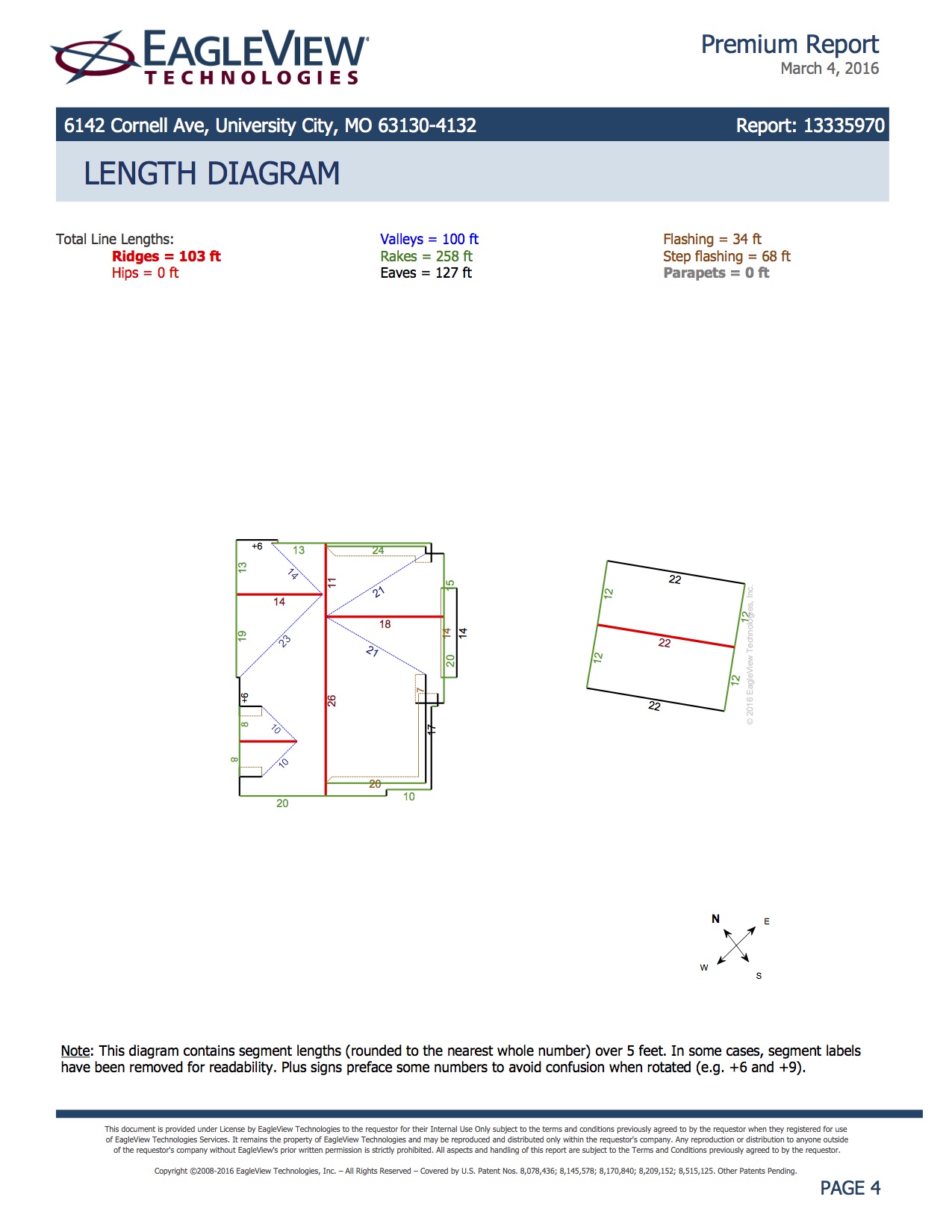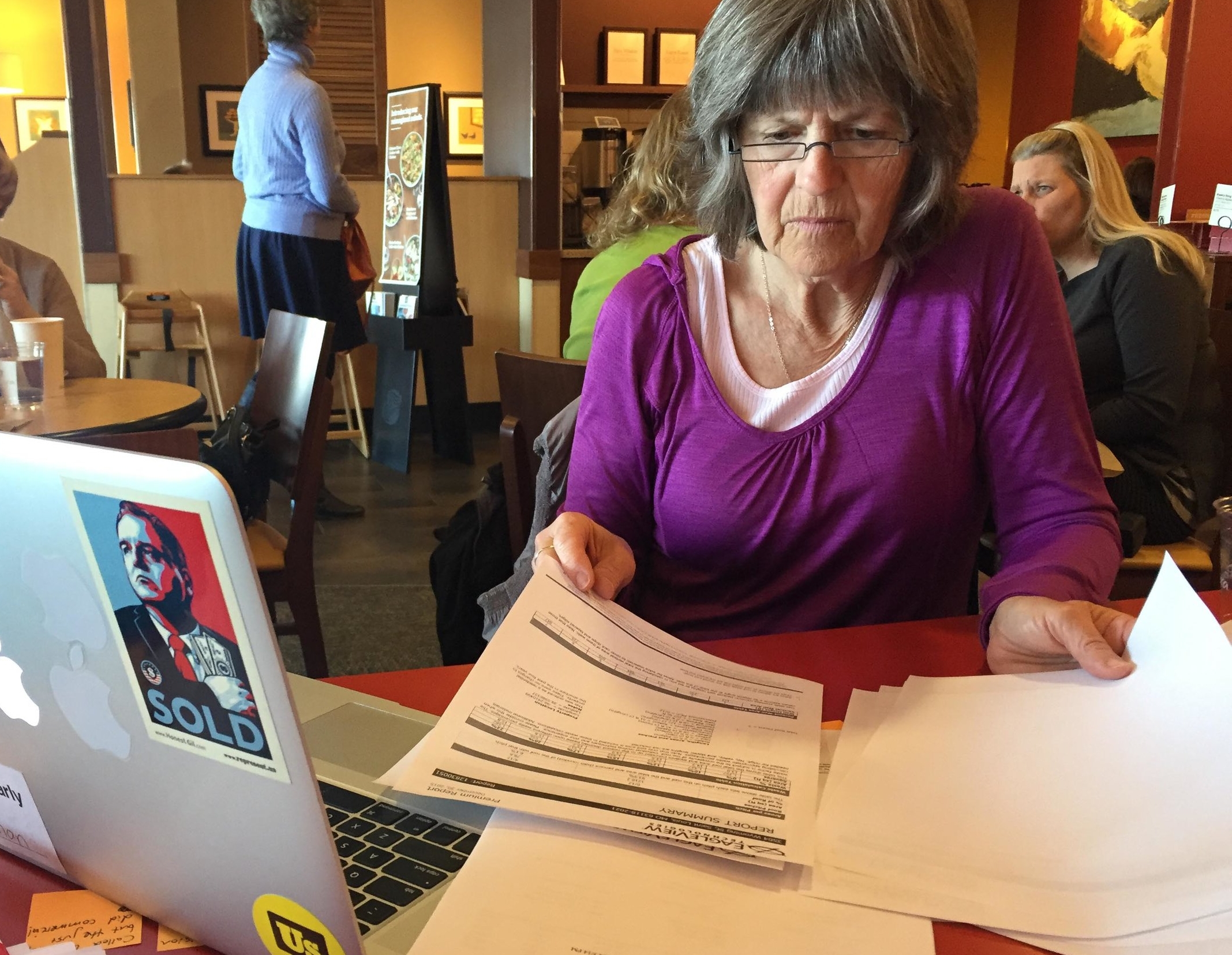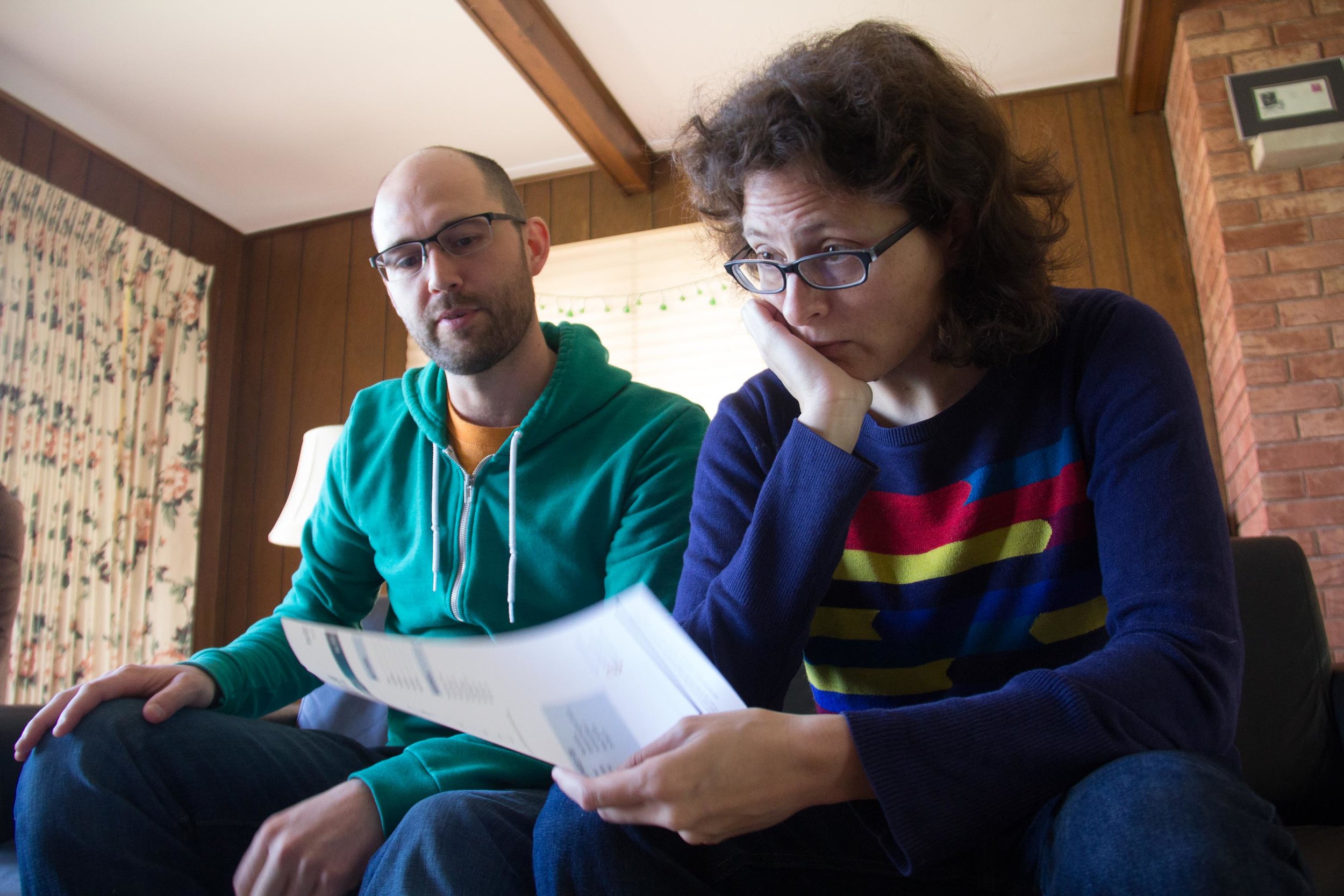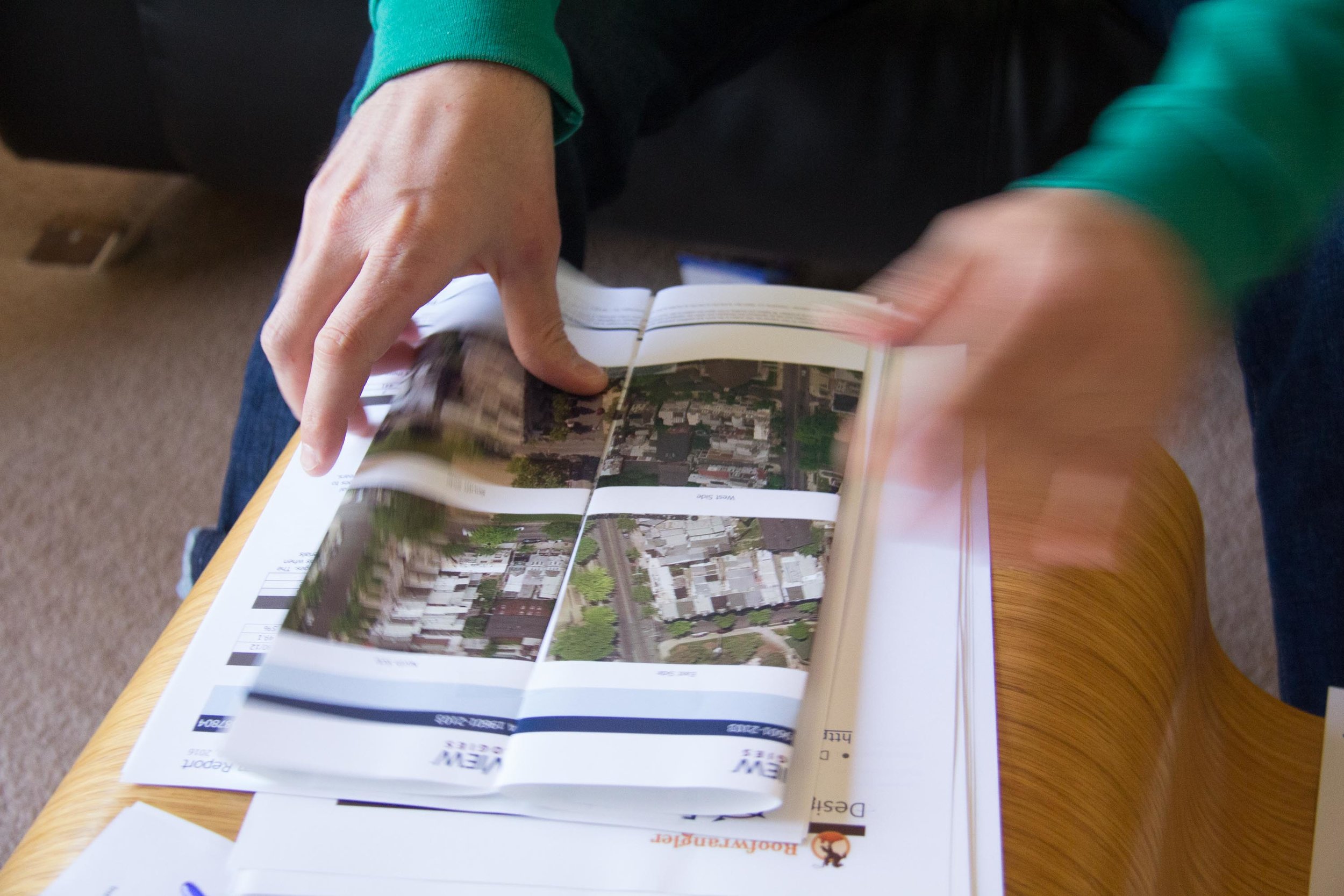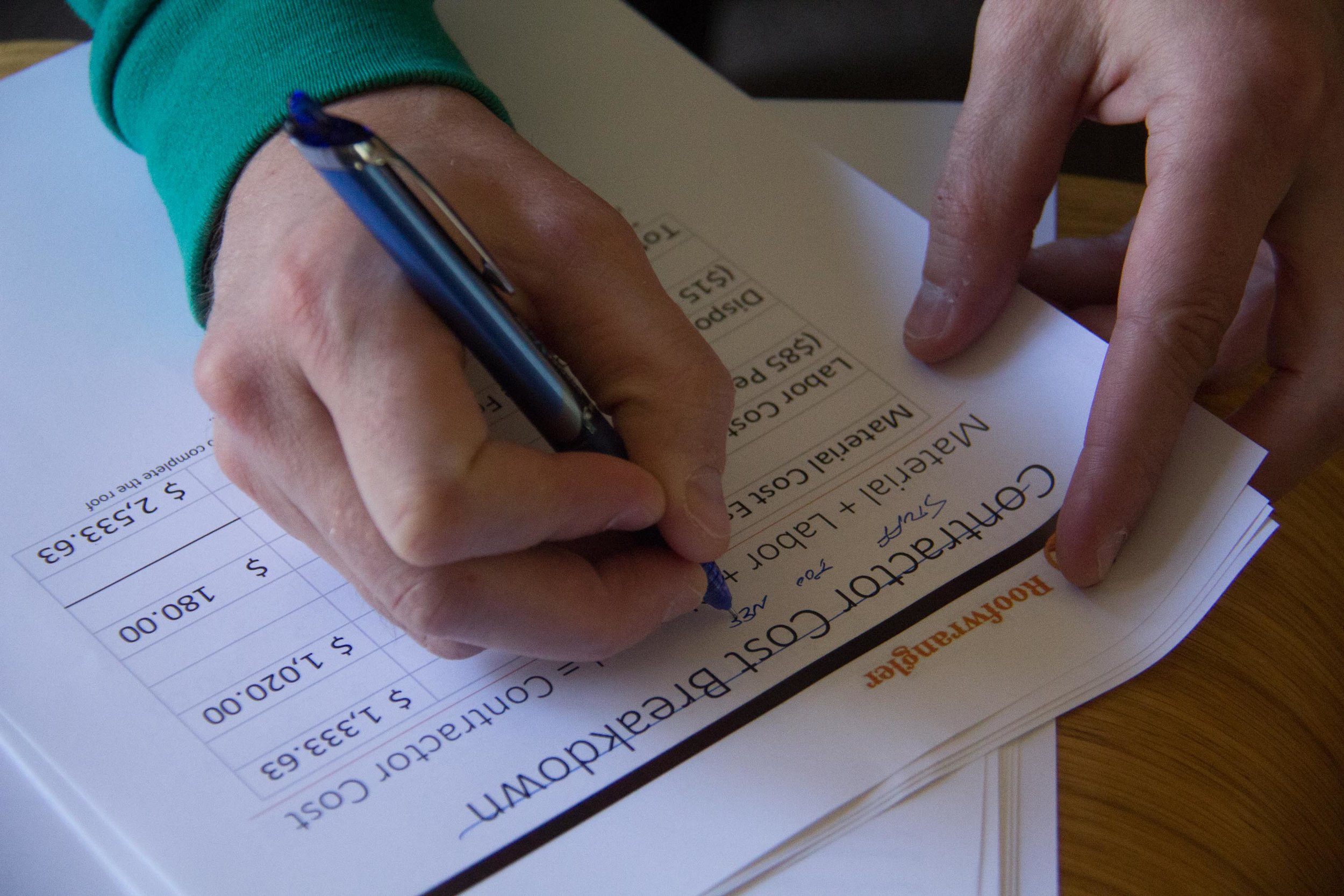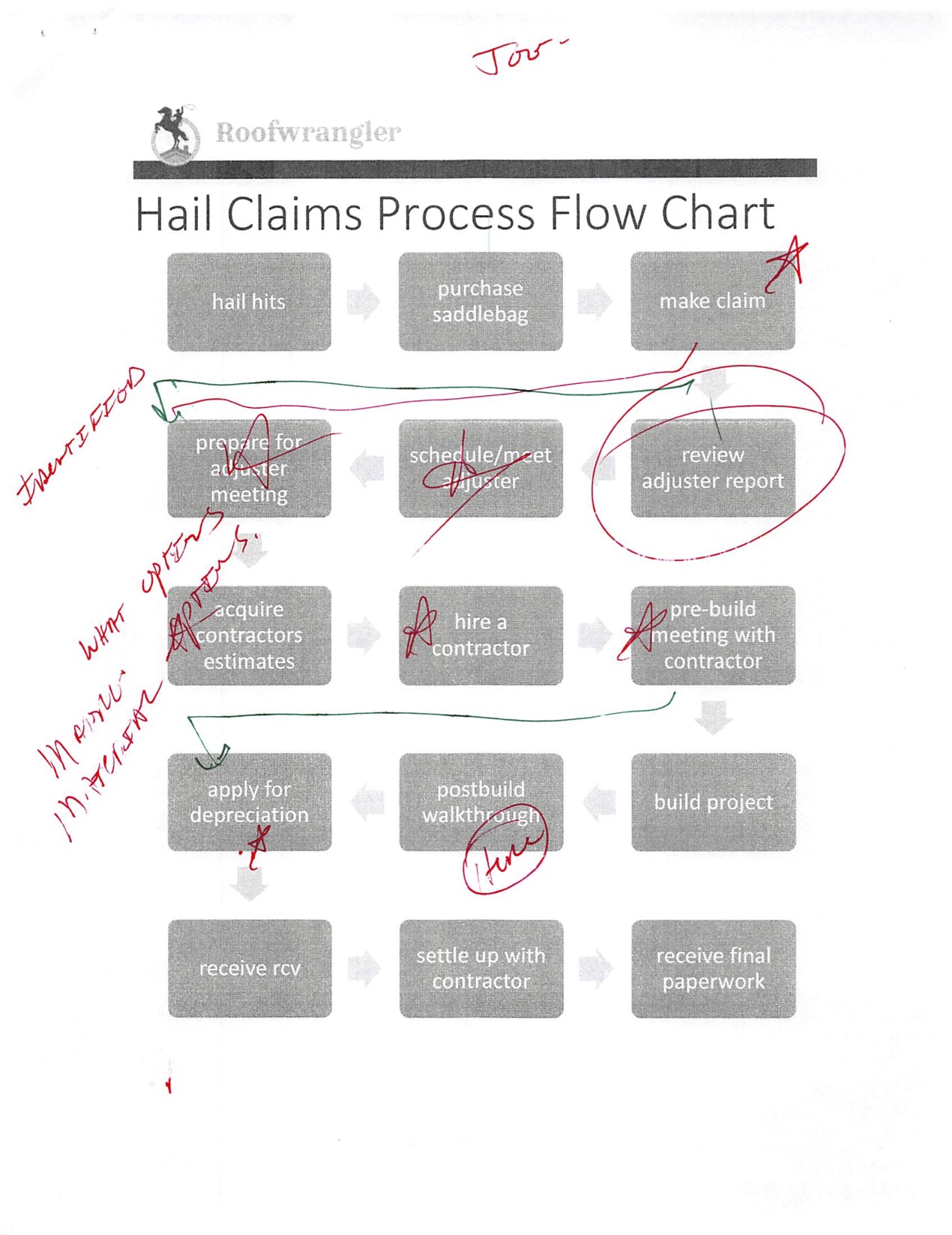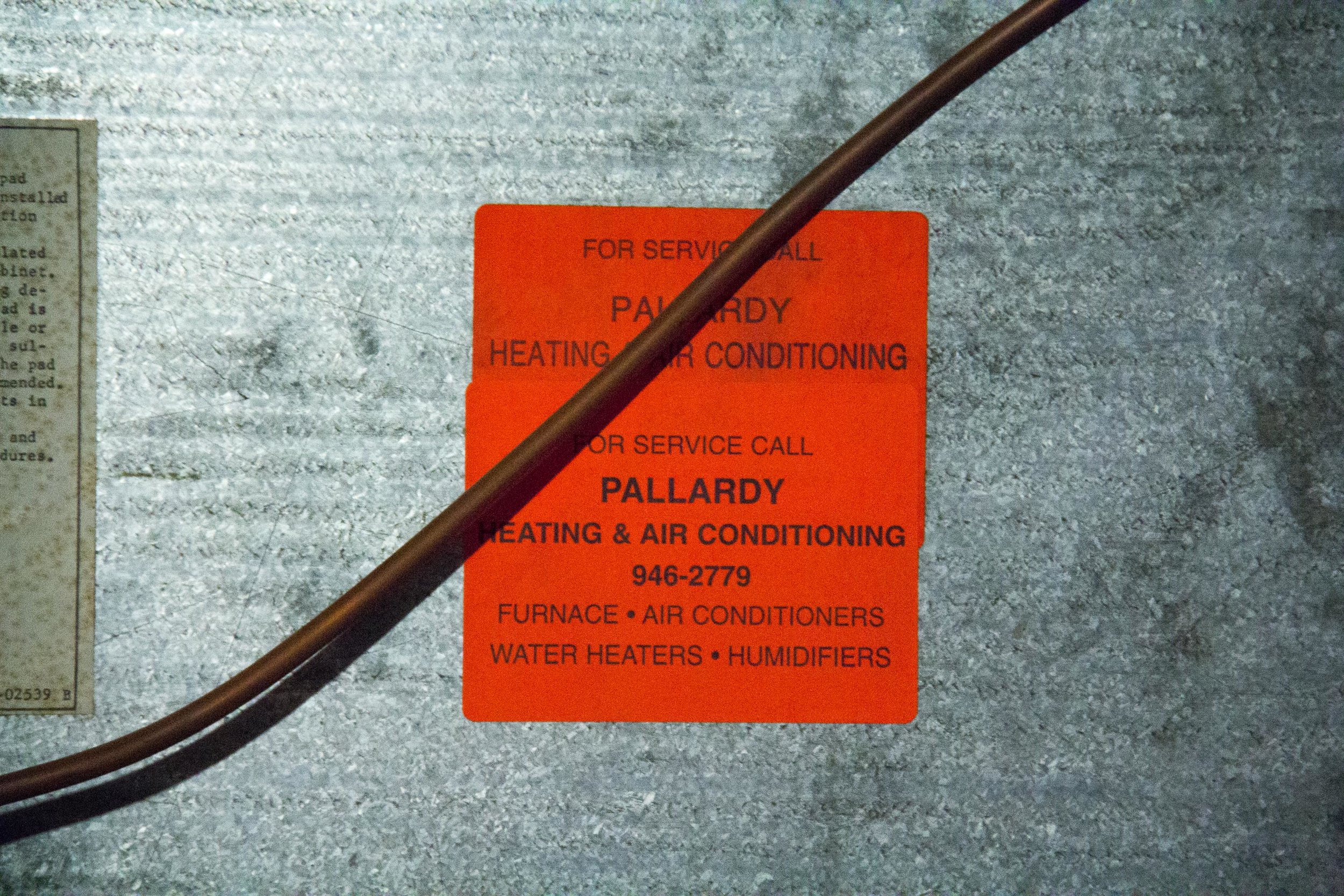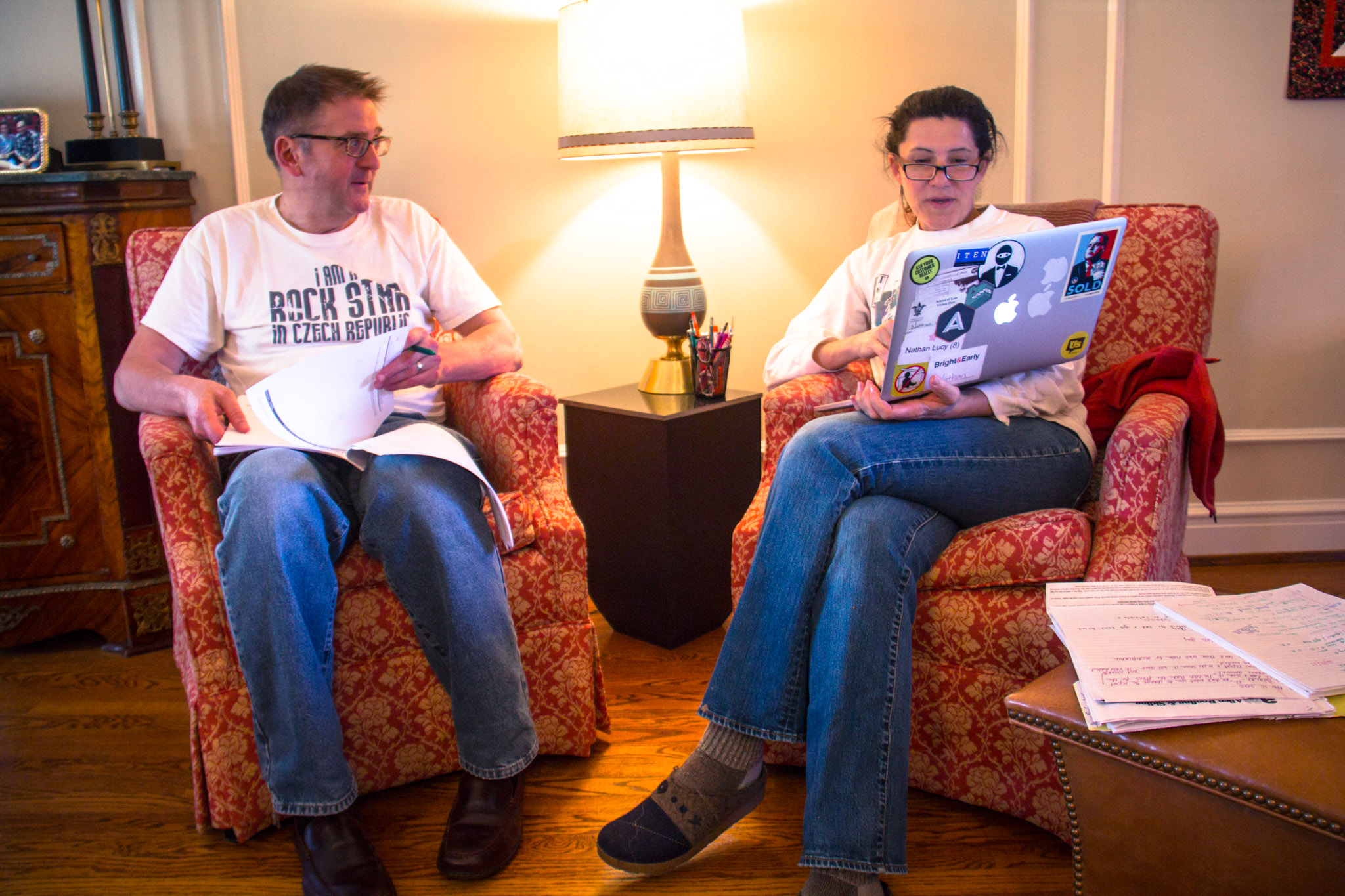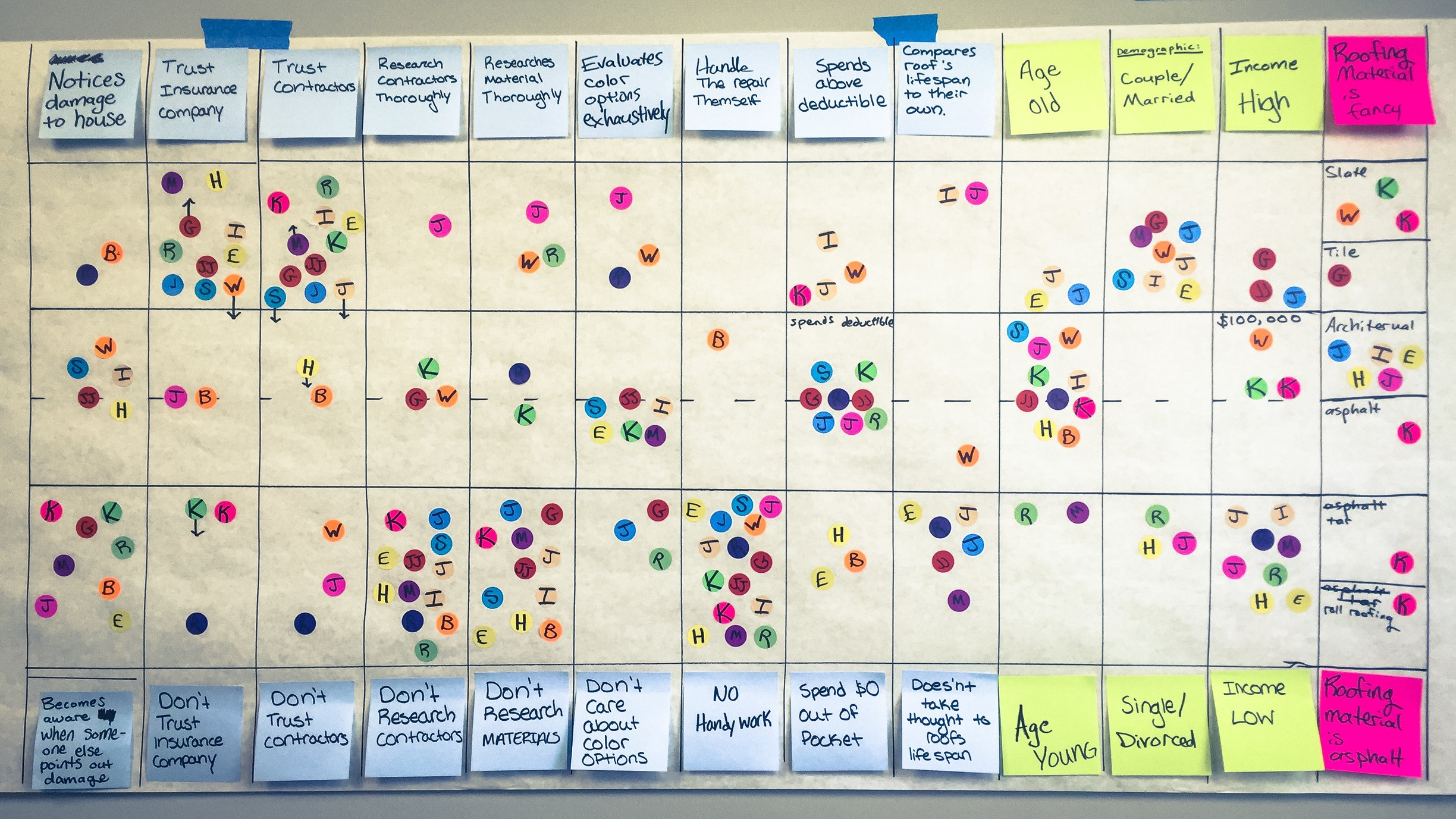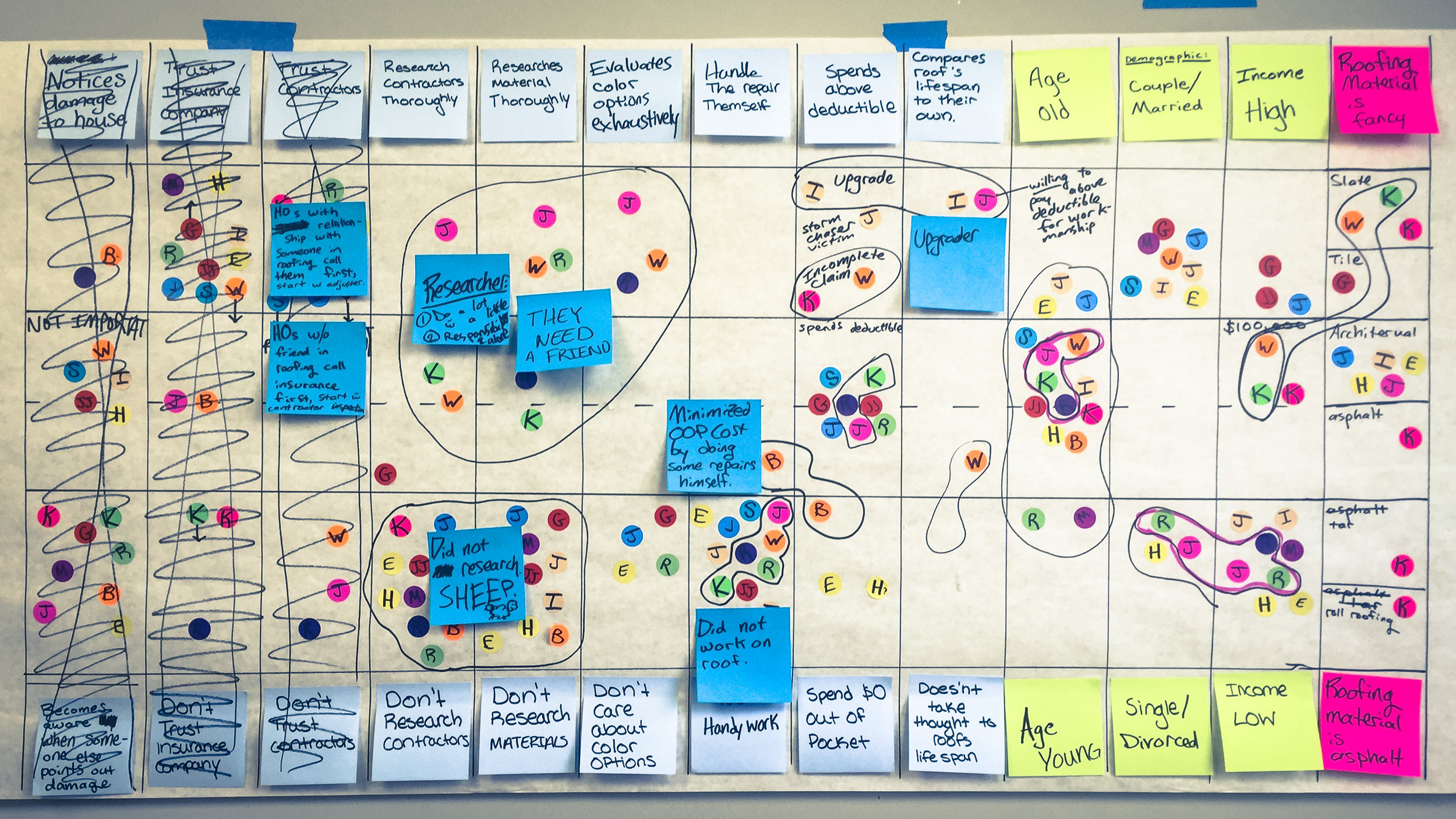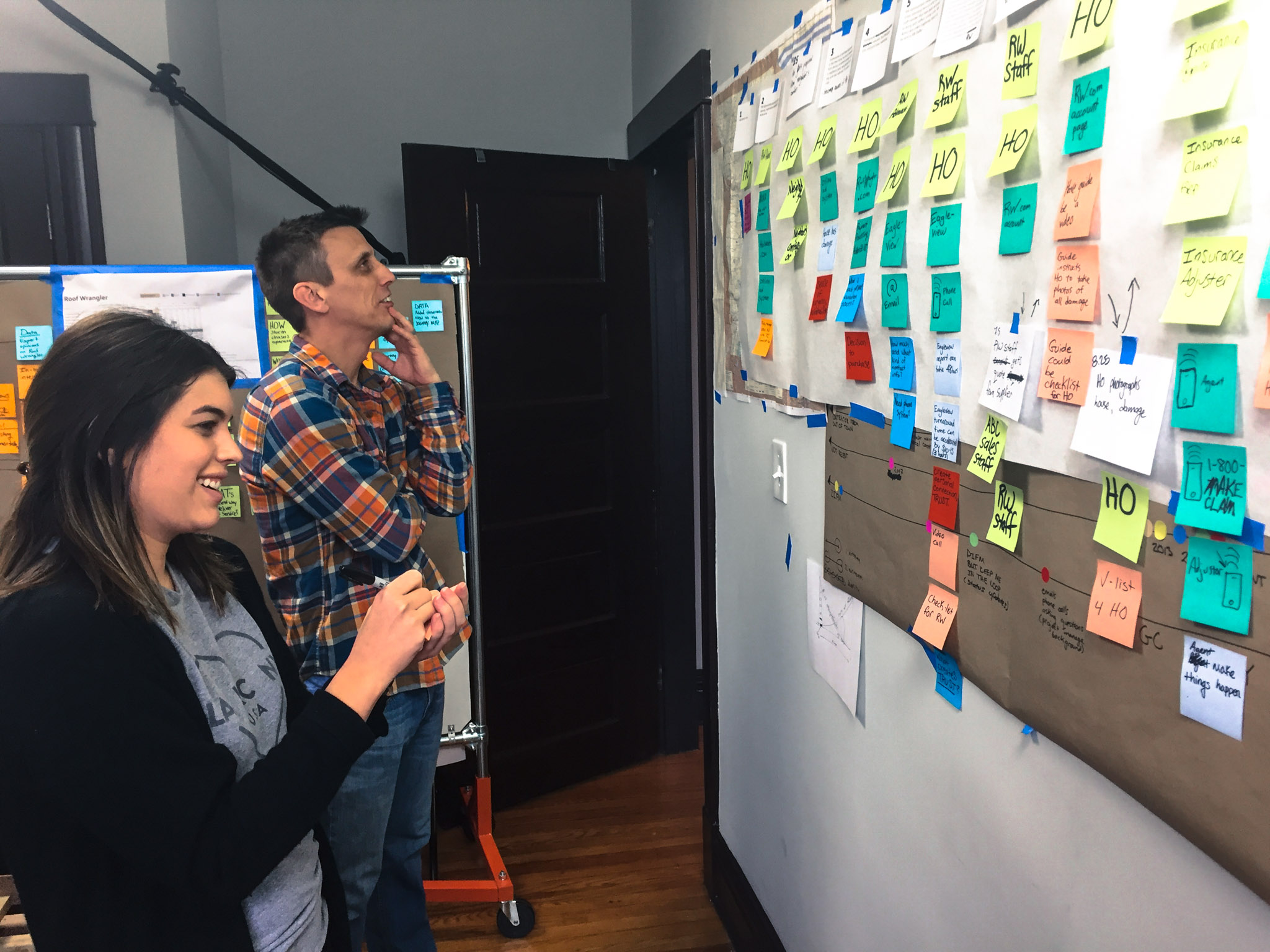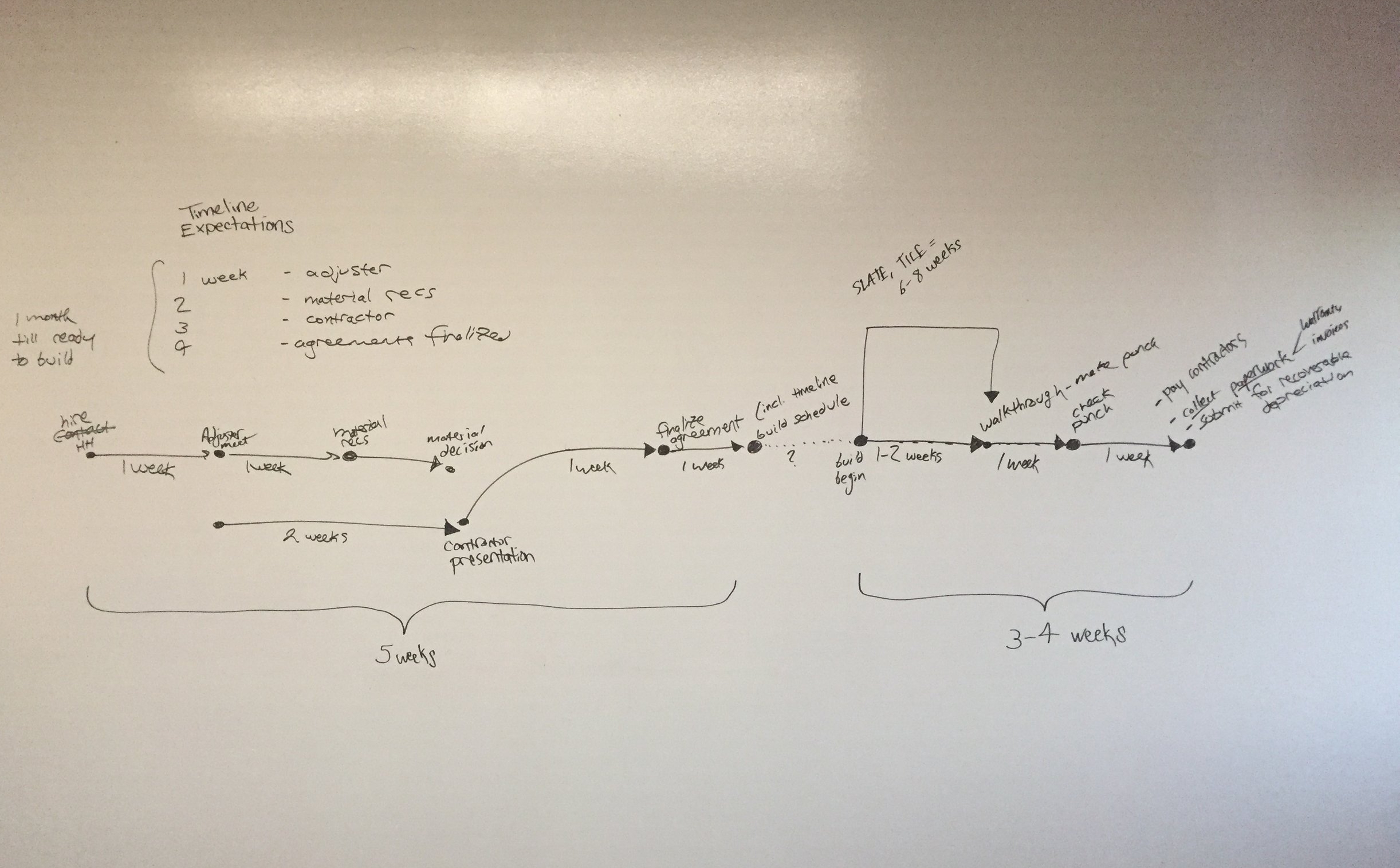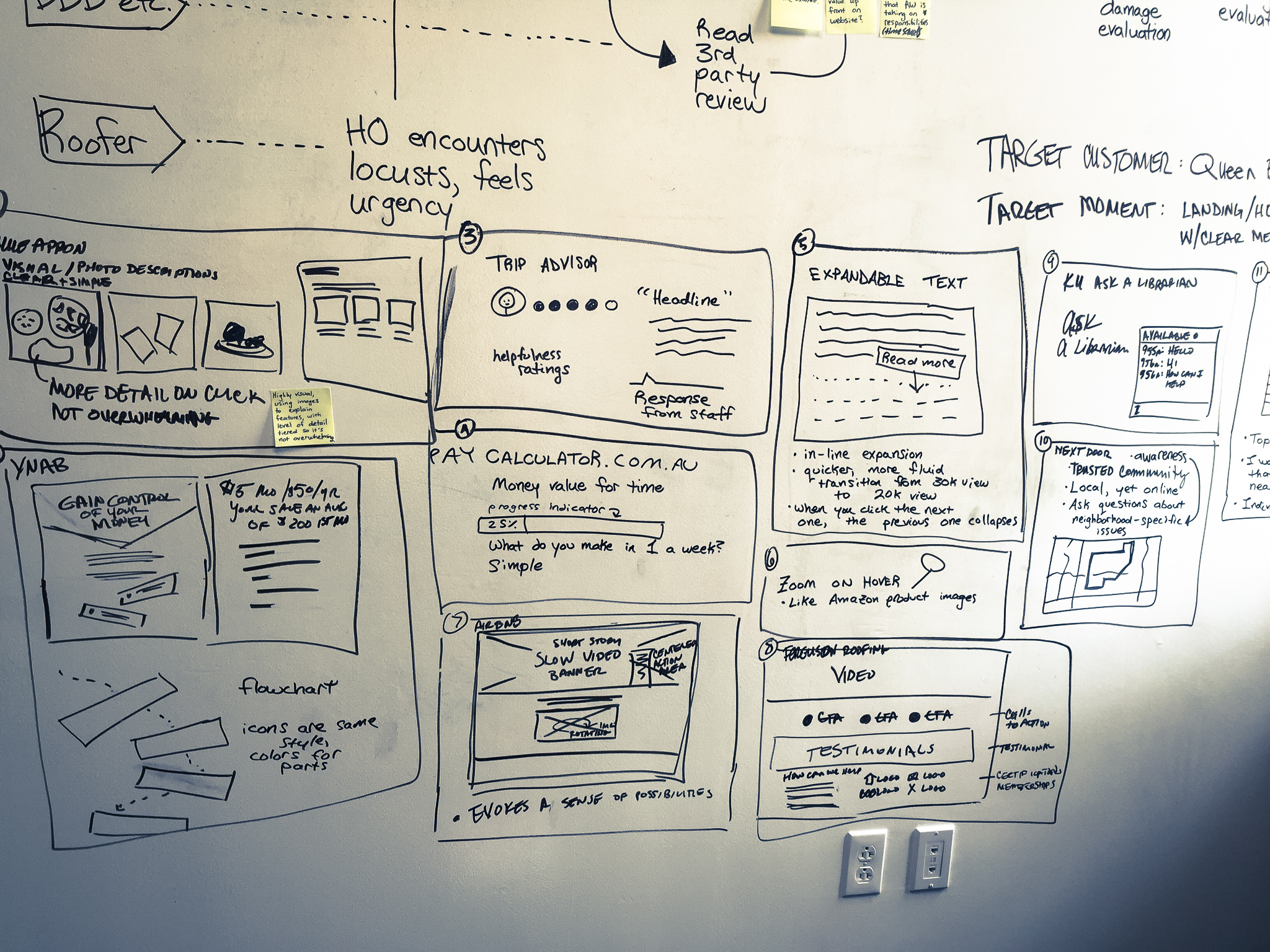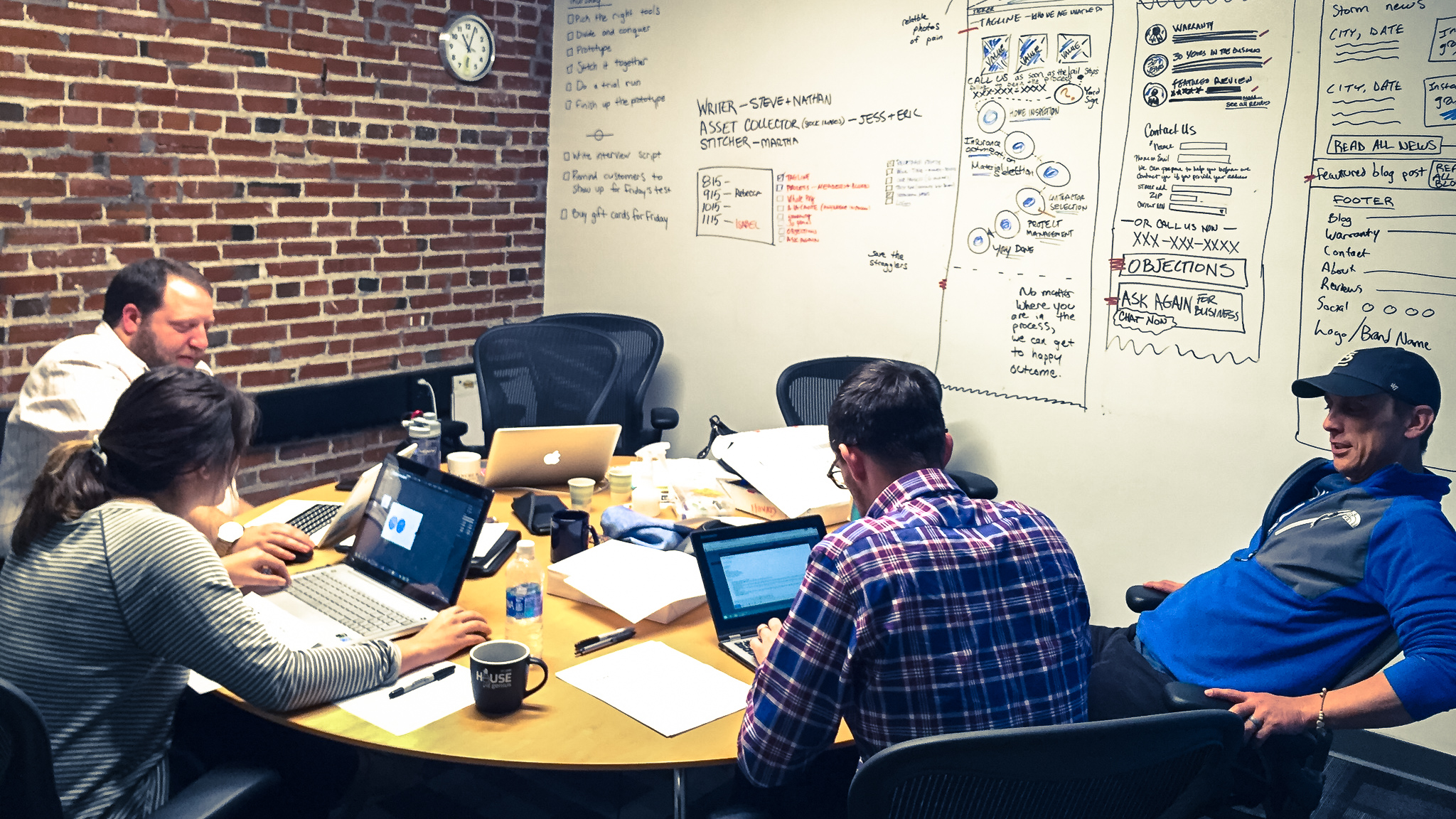I collaborated with my client and led a multi-disciplinary team to design a new service for homeowners with structural damage from hail.
Client
Hail Hero was founded by storm restoration professionals who saw homeowners’ need for help with insurance companies and contractors. They aim to advocate for homeowners dealing with the aftermath of a hail storm.
Challenge
I was engaged to validate an existing concept with prospective customers and to deliver an online marketing solution.
Outcomes
Customer Focus
The initial target market, "homeowners with hail damage," was too broad. We narrowed the focus to a clear, research-based persona.
Strategic Direction
The new focus led Hail Hero to pivot from product to service. We created a plan for delivering their unique service.
Online Presence
Finally, we built the service’s key touchpoints: a brand, lead-generation website, and ad campaign—all tested with and tailored to Hail Hero’s target customer. (The pre-existing brand "Roofwrangler" and its initials "RW" appear in some of the following images.)
Team
See xworx.co/blog/hail-hero for a full list of my talented collaborators and their contributions.
What I Did
Client relationship management
Content strategy
Design sprint co-facilitation
Paper prototyping
Persona development
Photography and videography
Project leadership and management
Recruitment and screening
Research planning
Secondary research
Service blueprint design
Stakeholder interviews
Subject matter expert interviews
User interviews
Web design
Wireframing
Workshop facilitation
Research
I began by immersing myself in the problem space.
The discovery phase aimed to:
Evaluate the client’s existing conceptual prototype and branding.
Understand homeowners’ hail restoration experiences, needs, goals, and pain points.
This primary and secondary research yielded over 1,000 quotes, observations, and data points. We interviewed 20 homeowners and reviewed numerous publications. We collected and coded our findings so we could revisit them and filter the data.
We recruited research participants through social media advertising and our personal networks, screening for home ownership and hail damage experience.
Sample page from the original prototype (PDF)
Evaluating the Existing Concept
The client's original concept was a document that aggregated the reports industry professionals use to generate insurance claims and estimate contractor costs. The intention was to equip the homeowner with “all the information the pros don’t want you to have” so they could negotiate successfully with their insurance company and contractor. The brand was “Roofwrangler,” and the tagline was “Wrangle the best roof replacement options.”
Prototype
We brought a prototype of the document to homeowners to observe them using it and solicit their feedback. We also showed them an early version of the marketing website to have them evaluate the value proposition.
“This would take out a whole lot of the leg work.”
“No thank you, that’s what I have a roofer for.”
Card Sort
The original name and visual identity
We showed homeowners the existing "Roofwrangler" branding along with several others roofing brands. Most preferred the more simplistic branding of traditional construction companies.
Card sort activity
“I can tell you who I wouldn’t call: Roofwrangler isn’t the aesthetic of a construction company.”
Understanding Homeowners' Experiences
Journey Mapping
Hail damage restoration can take months, involving many decisions and service providers. We needed to develop an understanding of the chronology.
She diagrams her experience chronologically.
After the research session, we photographed the steps and grouped them into stages.
Ethnographic Interviews
When it comes to building empathy, there’s no substitute for contextual user research, so we interviewed homeowners who had experienced hail damage in their homes.
“It’s like making a dress and not knowing how much material you need.”
“I was ticked at Amica.”
“Nobody knows what it costs to do anything.”
Synthesis
We needed to make sense of our unstructured research findings. Our synthesis phase aimed to:
Develop homeowner personas.
Identify opportunities to create new value for homeowners.
Help the client choose a customer focus.
Developing Homeowner Personas
Behavioral Variable Mapping
We identified several variables within our research findings. For example, some homeowners thoroughly researched building materials, while others simply accepted their contractor’s recommendation.
We plotted these variables side by side on bipolar axes. As we identified clusters of common characteristics, distinct user groups emerged.
2x2
We developed a 2x2 to classify research participants into four groups based on the two defining characteristics of homeowners with hail damage: research (how much work they do to find a contractor, select materials, and understand claims) and sociability (how connected they are to their neighbors and how much they influence or are influenced by neighbors’ repair decisions).
Graphic design by Jessica Tungesvik
Personas
Taking the 2x2 as a starting point, we developed personas based on data from research sessions. In every neighborhood there is a “Queen Bee Kelly”, an intuitive influencer; “Researcher Rob”, an analytical loner; “Follower Francis”, who follows “Queen Bee Kelly”; and “Slacker Sally”, an indifferent person. We validated these personas with industry professionals.
Graphic Design by Jessica Tungesvik
Identifying Opportunities
Two personas were viable customer focuses:
Hungry for more information and disinclined to trust contractors and insurance companies, “Researcher Rob” loved the original concept, “all the information the pros don’t want you to have.”
“Queen Bee Kelly” values dedicated personal assistance from someone she can trust to get the job done right. She has influence in her community and will reward good work with referrals to people like "Follower Francis".
Choosing a Customer Focus
I developed this final version of the chosen persona. (PDF)
The needs of these two personas were too different to design for both initially. Presented with the choice, my client selected “Queen Bee Kelly”, pivoting away from the original concept towards a white glove service.
Design
We pivoted from informational product to white glove service.
Our analysis clearly showed that the chosen customer wasn’t interested in Hail Hero’s initial offering. They needed to re-imagine their customer experience. In the design phase, we:
Blueprinted the new service.
Created a lead-generation website.
Designed a brand around the tastes of target customers.
Experimented with online advertising.
Blueprinting the New Service
We collaborated with the client to produce a service blueprint. It shows the end-to-end customer experience and supporting interactions and operations. The blueprinting process surfaced potential pain points as well as opportunities to create additional value.
The final blueprint (PDF)
This diagram, based on the blueprint, helps the homeowner understand the process.
Designing the Lead-Generation Website
Design Sprints
We rapidly designed a lead generation site through two design sprints. (We used the Google Ventures format.) Our goals were to clearly communicate Hail Hero’s new service to potential customers and to engender trust.
Testing with Homeowners
At the end of each sprint, we conducted usability testing with five homeowners who fit the "Queen Bee Kelly" persona. Their feedback not only helped us improve the site’s functionality, but also informed how we articulated the value proposition.
Final Website
I built the final website, hail-hero.com. I also created original imagery, including this splash video. (There is no audio. The video loops on the landing page in lieu of a static hero image.)
Branding
When the client renamed the service “Hail Hero”, I took on the branding. I based the creative brief for Hail Hero's visual identity on the Queen Bee Kelly persona and the nature of the service: reassuring, elite, and minimal without appearing aloof or egotistical. I hired and directed the branding team.
Logo
The logo incorporates a protective shield and the roof, doors, and windows of a house.
Creative Strategy by Conor B. Lewis
Graphic Design by Sergey Myshkovskiy
Business Card
Graphic Design by Conor B. Lewis
Yard Sign
Soliciting roofing contractors can become a nuisance in damaged neighborhoods. But most roofers respect a property that has been claimed with a yard sign. Hail Hero sends its clients a yard sign to deter soliciting refers and promote its services.
Graphic Design by Conor B. Lewis
Creative Strategy by Conor B. Lewis
Graphic Design by Sergey Myshkovskiy
Online Advertising
In new neighborhoods, Hail Hero's first customers will discover them through a location-based ads. The campaign can be targeted at zip codes in response to hail storm data provided by a 3rd party. Every call to action on the site—including the prominently displayed phone number—is equipped to analyze conversions. These tools will help Hail Hero optimize their marketing.
Hail storm data visualized by a 3rd party
We tested several ad copy variants.
Conclusion
Hail Hero is ready to defend homeowners facing the aftermath of the next hail storm.
With the solid foundation of a clear customer focus, the new direction of a service blueprint, and an appealing online presence, Hail Hero is fully equipped to attract and satisfy their most enjoyable, profitable customers.


